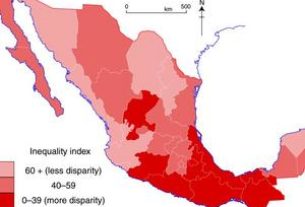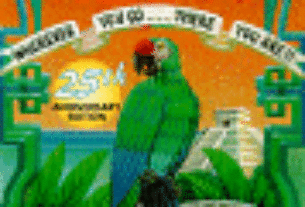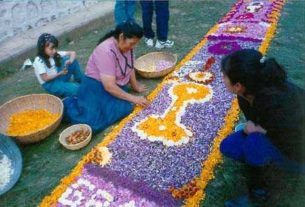If you would like a glimpse of several slices of Mexican history in all their messy complexity, with its heroes and villains, both local and foreign, the National Interventions Museum should be on your list of places to visit.
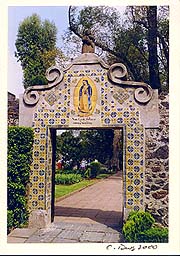
Located in the Ex-Convento Churubusco of Mexico City, the museum [Museo Nacional de las Intervenciones] offers exhibits covering six more or less unwelcomed visits by foreign armies: the Spanish invasion of 1829, the French invasion of 1838-39, the US invasion of 1846-48, the French invasion of 1862-67, the US invasion of 1914, and the US invasion of 1916.
The museum tells its story through numerous documents, newspapers, letters, citations, proclamations, etc., with captions when needed, plus a careful selection of artifacts. There are military medals, swords, pistols, rifles, cannons, commemorative coins, jewelry, furniture, a couple of thrones, a chandelier, and scores of pictures, including paintings and etchings and photographs of the many players.
As mentioned earlier, the museum is not presenting a tidy history of Mexico, but rather a sprawling canvas of imperial ambitions, revolutions, counterrevolutions, trade treaties, foreign meddling, and the shenanigans of politicians and military leaders.
Mexico became independent of Spain in 1821, but not independent of bad and unstable government. In 1829 the Spanish King Ferdinand VII thought he saw an opportunity to restore his empire and sent troops. They did not succeed. Then the French, viewing Mexico as still a land of gold and silver, blockaded its ports in 1838 to force a free trade agreement.
But the most dangerous-and successful-invaders were the norteamericanos [the US], impelled by two principles: the Monroe Doctrine, which warned the Europeans to keep their hands off the Americas; and Manifest Destiny, which assured the norteamericanos they could keep anything they could get their hands on. And they did, too: they got Texas via a revolution in 1836. Oh, there were nine years of being an independent republic for Texas, but US statehood was always the goal. Then in the invasion of 1846-48, the US forced Mexico to cede roughly two-fifths of its land-what became the western US, everything west of the Louisiana Purchase.
Then when the US was too bogged down in civil war to flex its Monroe Doctrine, Napoleon III sent occupation forces to Mexico in 1862, and two years later placed Maximilian and Carlotta on the Mexican throne. Their reign lasted three years. There were two more US invasions, one by sea into Veracruz to stop the Germans from shipping arms to the counterrevolutionaries, and a punitive retaliation across the Tex-Mex border against Pancho Villa, who had raided a couple of Texas border towns.
Along with the museum, the site is also well worth a visit itself. Once called el Convento de Nuestra Señora de los Angeles de Churubusco, it was built on the site of a temple to the Aztec god of war. The name Churubusco is a rough Hispanicization of Huitzitipocho, or the place of the war god, Huitzitipochtli. This is all very apt, because the building, with its thick adobe walls, four feet thick and twelve feet high, looks like a fortress. And it served as a fortress in the bloodiest battle of the Mexican-American War, or what the Mexicans call the War of Intervention. This is the battle where a battalion of mostly Irish Catholic soldiers, the Saint Patricks, or San Patricios, earned a permanent place among Mexican heroes for their valor.
The muddy earth below the Ex-Convento Churubusco has not supported the structure evenly, and in some of the rooms the floor may be several inches lower at one end than the other. And when you look down a corridor each archway and door facing is tilted independently of the others, giving one almost a drunken feeling. Nothing is quite plumb, and vertical edges are seldom parallel. But then the history depicted there is never quite plumb or parallel either.
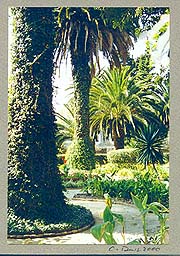
Within the walls there is a fairly formal courtyard with numerous benches and a huge lovely garden with a great variety of flowering plants and some of the largest palm trees in Mexico City.
A minor caveat: Some of the display captions are in small fuzzy type and not easy to read. Also, if the captions are ever redone, it might be nice to have English and French translations, so the touring descendants of all the invaders can more easily digest this portion of the history of Mexico.
Sidebar: Antonio López de Santa Anna, Mexican general and dictator, pops up repeatedly in Mexican history from 1824 to 1855. He took over the government eleven times, emptied the public treasury eleven times, held a formal state funeral for a leg he lost in battle, and was overthrown eleven times. In Texas he’s remembered as the villainous general who overthrew the Alamo and took no prisoners. He was captured in the Battle of San Jacinto that freed Texas from Mexico, and the Texas General Sam Houston was going to have Santa Anna shot until he found out he was a fellow Mason.
Among many other things, Santa Anna was also a chewer of chicle, the sap of the chicle tree; and when he went to New York to plot one of his overthrows of the Mexican government, he took along chicle hoping to find investors and market it as a rubber substitute. He met a Dr. Adams who prescribed it as a palliative for a patient who couldn’t tolerate sugar. She liked it, so Adams prescribed it as a medical “chewing” gum. But it was a soap manufacturer named Wrigley who thought it could be marketed as a popular non-medical confection with the same name – chewing gum. So the US has one of Mexico’s premier scoundrels to thank – or blame – for a habit that has irked elementary school teachers for generations and that the pre-McDonald Soviets used to call a prime example of “western bourgeois decadence.”

